Summary
- Dispersion & rainbows
- Human vision correction
- Magnifying glass
Chapter 28
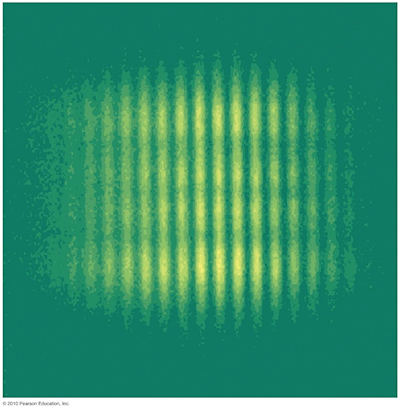
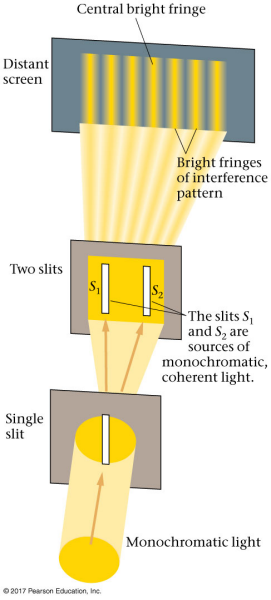
- Young's interference applet
another
applet
- Wave superposition applet
- Water waves video
- diagram and equation
- small angle approximation
Example #1
Example #2
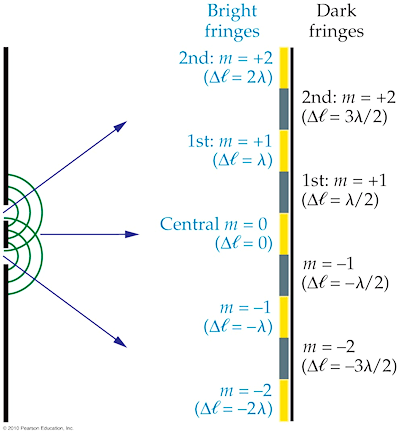
- Wave optics video
- Lecture learning outcomes
A student who masters the topics in this lecture will be able to:
- describe the pattern of light created by a Young's (two-slit) interference experiment in terms of superposition of waves
- use algebra to find the slit separation d, angle to a bright fringe θbright, order number m, or wavelength λ for two-slit interference when any three of these quantities are given
Practice:
Try these additional examples
Example #3
Example #4
Prepare:
Read textbook section 28-3 before the next lecture
gc6 24.q6
Blue light is shined through two slits to produce an interference pattern on a screen. What will happen to the
pattern if red light is used instead?
A. The pattern will not change.
B. The pattern will condense.
C. The pattern will expand.
D. The pattern will be too dim to see.
Answer
gc6 24.4
Light of wavelength λ = 656 nm falls on two narrow slits d = 0.060 mm apart. How far apart are the fringes on a screen L = 3.6 m away?
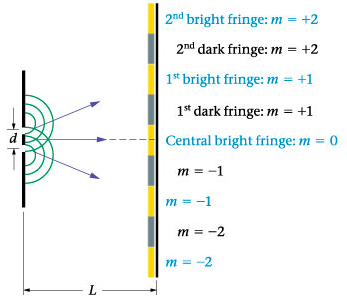 A. 6.56 cm
A. 6.56 cm
B. 3.94 cm
C. 1.14 cm
D. 0.77 cm
Answer
Walker5e 28.EYU.2 mod
If the frequency of light in a two-slit experiment is increased, the angle to the first bright fringe above the central bright fringe will_____.
A. increase
B. decrease
C. stay the same
Answer
Walker5e 28.11
Moe, Larry, and Curly stand in a line with a spacing of 1.00 m. Larry is 3.00 m in front of a pair of stereo speakers 0.800 m apart. If the speakers vibrate in phase, what are the two lowest frequencies that allow Larry to hear a loud tone while Moe and Curly hear very little? The speed of sound is 343 m/s.
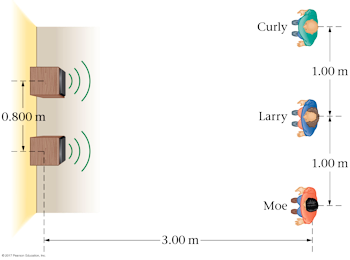
A. 226 Hz and 678 Hz
B. 339 Hz and 1017 Hz
C. 1085 Hz and 2170 Hz
D. 678 Hz and 2034 Hz
Answer
C. The pattern will expand.
Red light has a longer wavelength than blue, and the separation between adjacent maxima in the interference pattern is linearly
dependent upon the wavelength.
B. 3.94 cm

B. decrease
A higher frequency corresponds to a shorter wavelength. Waves of shorter wavelength spread out (diffract) less after passing through the slits, and the short wavelength leads to a smaller angle at which constructive interference (one wavelength path difference between the two waves) will occur. You can also see the angle decreases when the wavelength decreases by examining the formula, d sin(θbright) = mλ.
D. 678 Hz and 2034 Hz
We need to find the two lowest frequencies that produce destructive interference at the positions of Moe and Curly. Larry will always hear a loud sound (constructive interference) at his location no matter the frequency.
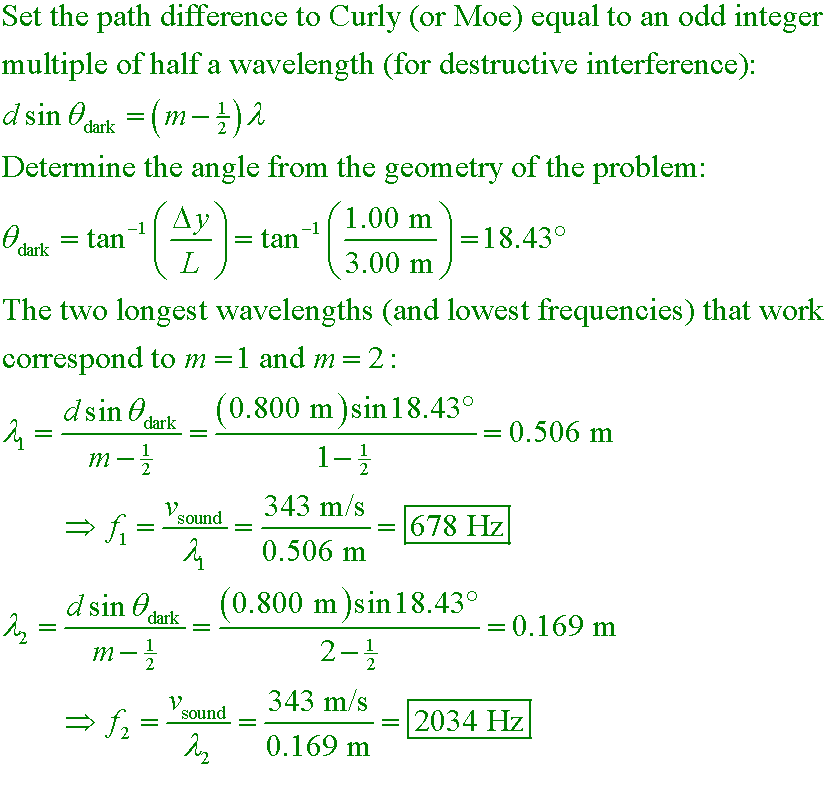



 A. 6.56 cm
A. 6.56 cm

